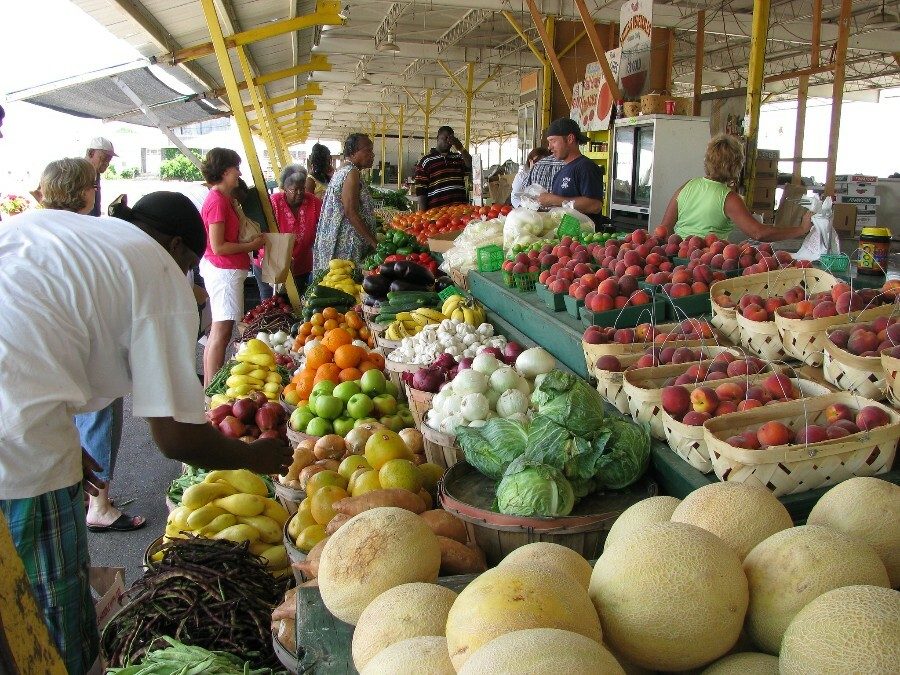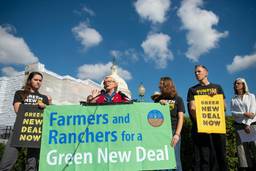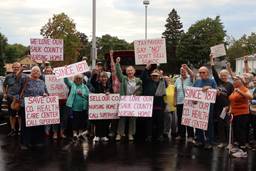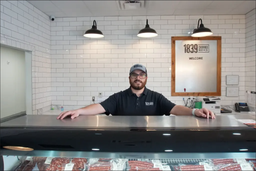The Local Foods Movement Has Made Half a Revolution. For the Other Half, We Need a Green New Deal
Anthony Flaccavento

I’m one of those “farmers and ranchers for a Green New Deal,” and like a lot of them, my involvement started with soil.
I began market gardening in 1994, five years before my wife and I purchased the old tobacco farm where we’ve been doing organic farming ever since. Back in the mid-90’s in southwest Virginia, there was barely a hint of a “local food system,” save the occasional bartering of excess produce or the purchase of a quarter cow for freezer meat.
In that context, I started a tiny CSA — Community Supported Agriculture — with a dozen families, supplying them from my market garden. I reckon it was one of the first CSAs in central Appalachia.
Within four years, there were nearly 100 participating families and six other farmers contributing produce, eggs, honey and other staples, organized in a growers’ network we called Highlands Bio-Produce.
There were two types of farmers in our network: Amish, and back-to-the-landers. The customers who committed to us for the 28-week season, mostly middle-class folks, were also of two types: The “conscious consumer,” committed to good, healthy eating and willing to spend more time and money to get it; and the “dabbler,” who was willing to try something different, but as much for the novelty as out of any larger commitment.
We had, I think, a predominance of dabblers amongst our early customer base, part of the reason why turnover was quite high. I recall being scolded by one such customer whose exasperation over the lack of sweet corn in her basket came through in a phone call. That call was in the first week of June, three weeks after our spring frost date had passed. Corn plants were not even a foot tall yet.
For food consumers accustomed to ubiquitous abundance, seasonal limitations were anathema.
A great deal has changed since then.
For one, there are many more farmers producing for local markets. According to a 2016 survey by the U.S. Department of Agriculture’s National Agricultural Statistics Service, there are more than 167,000 farmers in the U.S. now selling at least part of their farm products through local and regional channels.
Estimates of total sales of “local foods” vary (depending upon what you consider to be “local”) but are between $8.7 billion and $12 billion, either figure representing dramatic growth over the past decade. And a sizeable portion of these farms are using ecologically sound production practices: Over $6 billion of organic food sales in 2016 were through local markets.
Organic food sales in the U.S. now exceed $50 billion annually.
While produce continues to be the “front line” of local foods, in many parts of the country it is only part of what’s being offered through farmers markets, CSAs and other local food channels. Eggs, a wide range of healthy, pasture-raised meats, and even dairy have crept into local food markets. This is making it possible — even easy in some places — for shoppers to “make the market their supermarket” as we’ve begun to say in Abingdon.
The development of local foods infrastructure, almost from scratch, represents a second critical change from the early years of earth momma customers traveling to “their farmer” to pick up the week’s groceries. Though still far less commonplace than supermarkets and fast food, local, sustainably raised food is far more widely and conveniently available than 20 years ago. The number of farmers markets has increased nearly fourfold, from 1,750 in the mid-nineties to over 8,500 today.
Food hubs, which aggregate, pack and ship local farm products, now number several hundred across the country, making it easier for independent grocers, restaurants, schools and hospitals, and even some supermarkets to carry local food.
And though still sorely inadequate to the needs, local food processing facilities, from abattoirs to shared-use commercial kitchens have begun to make it easier for small- to mid-size farmers to add value to their products and reach more customers.
The third significant change is among eaters, the consuming public.
For one thing, there are many more American consumers seeking out local food, not only at markets, but in restaurants and at the schools where they or their children attend. A 2017 Gallup Poll found that nearly three-fourths of people stated they purchase local food, while one in five Americans indicated they eat local food twice per week, according to Statista.
While I’m skeptical of these numbers, having experienced first-hand the profound challenge of changing people’s shopping and eating habits, there is no doubt that tens of millions of Americans now consider where their food comes from, how it was raised and where they can get it.
The Need for a Green New Deal
Local foods, along with organic and sustainably produced foods, have demonstrated that the market can drive change towards health and ecological sustainability. However, it’s equally clear that the pace of this change is too incremental to seriously impact climate change or foster broadly based — and desperately needed — economic revitalization in rural communities.
For that, we need major investment, along with policy changes that will support sustainable farming and regional food systems, while breaking the stranglehold of Big Ag monopolies that undermine farmers, rural communities and the ecosystem.
What kind of policy do we need and how can a Green New Deal make that happen?
While that will be the focus of the second article in this series, part of the strategy for policy change must come from the bottom up, building on the successes of the organic and local foods movements. That success includes tens of millions of everyday Americans, including people of limited means, who now shop for local and sustainable foods.
Yet precious few of them are engaged in the bigger questions of policy and public priorities. They’re sustainable food consumers, but most are not sustainable food citizens.
I believe that a portion of them can be mobilized to be advocates for a more just and sustainable food system, one reflective of their social and ecological values.
After all, given the choice, how many people who routinely support sustainable farmers with their food dollars really want to support Monsanto and Tyson with their tax dollars? That’s an absurd contradiction, one that we can change only if we build a broad base of well-informed and well-equipped food citizens.
And that’s where the second piece in this series will begin.
Editor’s Note: This essay is the first of a two-part series originally published on the blog of the Organic Consumers Association. It is republished here with permission. To read the second part in the series, click here. To read the original version of this article, click here.
Anthony Flaccavento is a farmer, author and rural development consultant in southwestern Virginia and the executive director of the Rural Urban Bridge Initiative.








